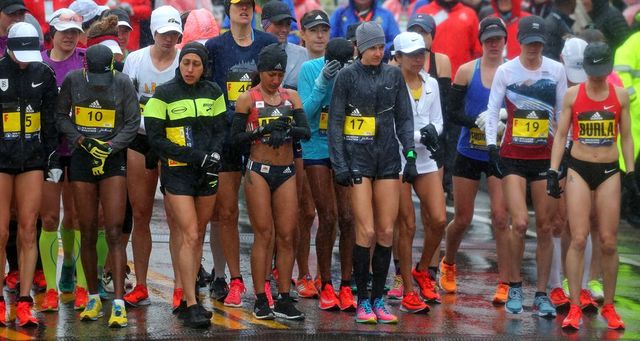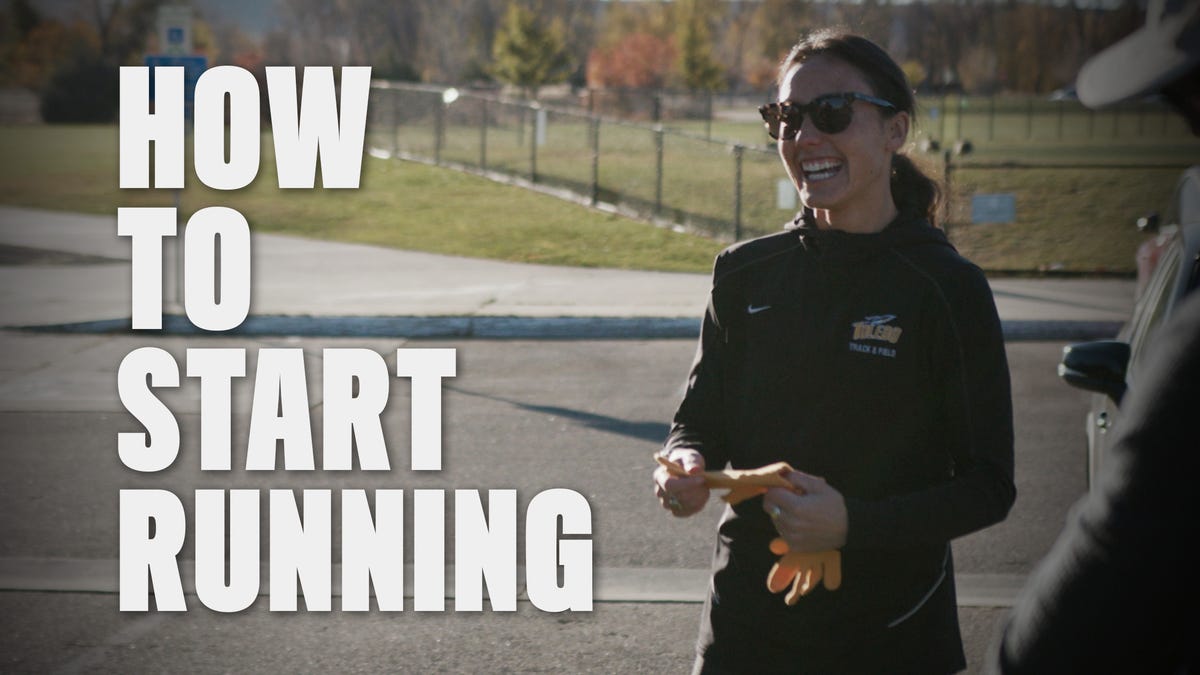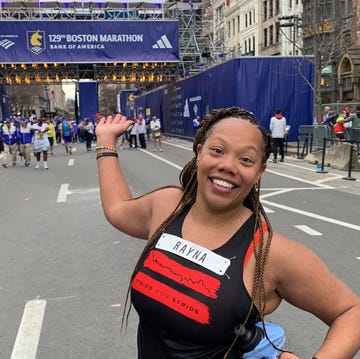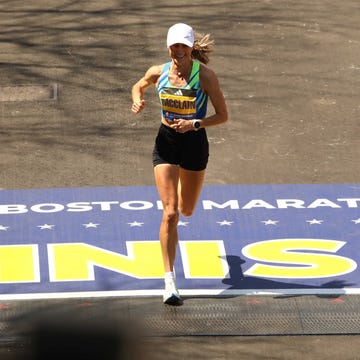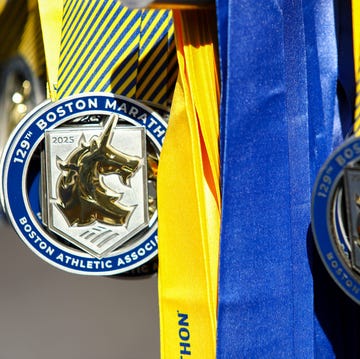In my hometown, every Fourth of July begins with a one-mile race on the streets of Flagstaff, Arizona. It’s set up like the Fifth Avenue Mile or the Carlsbad 5000—waves of competitors, grouped by age and gender, compete against each other.
If I enter the Downtown Mile, I can choose the category in which I want to compete. Being “an old,” I can opt for the masters wave or if I’m feeling ambitious, I can go for the open division and risk being whooped by a pack of teenagers. Typically I opt to skip it altogether and volunteer instead.
However, if I decide to compete in the open category, place 10th, but run a faster time than the winner of the masters division, I don’t earn the first-place masters award—it was a different race, with different competitors, which created different racing strategies and dynamics. It was an entirely different competition—one in which I chose not to participate. I go home empty-handed.
Seems fair, doesn’t it?
In the aftermath of the 2018 Boston Marathon—a year in which the treacherous weather conditions played heavily into the racing tactics of top female athletes—three women in the open category and two masters athletes ended up in the final results with faster finishing times than women who received the prize money. The faster women were ineligible for the awards because they didn’t qualify to compete with the elite women’s-only field of 46 athletes, which started at 9:32 a.m. in Hopkinton, Massachusetts. Instead, these women began at 10 a.m. in the next wave of 7,500 mixed-gender competitors.
What happened next included predictable outrage and backlash. Just as predictably, much of the controversy was unwarranted and based on misinformation. Some news outlets framed it as an issue of gender inequity. Others didn’t fully understand the rules involved.
After two weeks of trying to explain the rationale behind the policies to anybody who asked, the Boston Athletic Association (B.A.A.) announced Thursday that it would award the non-elite women the prize money after all. It was a generous and classy move—one that also was unnecessary.
“The B.A.A. will ensure that these five additional women (all of whom started in wave one) receive a financial award for their net-time performance this year,” according to a written statement from the B.A.A. “These awards will be made in addition to the existing prize money that will be paid to the Elite Women’s Start (EWS) competitors, and equal with the amounts paid to corresponding EWS placements.”
As a result, Jessica Chichester, who had the fifth-fastest time (2:45:23) gets $15,000; Veronica Jackson (2:49:41) receives $1,700 for the 13th-fastest finish; and Becky Snelson (2:49:50) takes $1,500 for the 14th-quickest 26.2 miles. Joanna Bourke Martignoni clocked the third-fastest masters time (2:52:19) for $2,500 and Brenda Hodge had the fifth-ranking masters race (2:58:50) for $1,000.
Certainly, this recognition on what was a historically challenging day in Boston, is a lovely gesture. It also offers an opportunity to explain how elite women’s marathon racing works and why.
Why do the elite women have an earlier starting time?
It was a tactic that began in 2002 at the New York City Marathon. Officials decided that the women’s elite field of about 40 athletes who had qualified with a 2:40 or faster marathon would start 35 minutes ahead of the men’s professional group and 50,000 or so other runners.
It offers the women more exposure on television and to spectators, because they aren’t mixed in or blocked by men who are running the same pace. It also gives the professional women a chance to truly compete against each other—they know where their competitors are, they can respond to each other’s moves, and gauge effort in relation to how the race is playing out.
The strategy has been well-received by fans and athletes alike, spreading to many other races like Boston and the London Marathon, and heralded as an advancement for women in sport, elevating the profile of the athletes. World records are now divided into categories for women’s-only races and those clocked in a race that included men, which is considered an advantage because men can aid in pacing and drafting.
Who is included in the elite women’s field?
Much of the controversy that has followed the 2018 Boston Marathon involves how the women are chosen for the elite field and why the women who started in the wave behind the professionals weren’t included in it.
In Boston, elite athletes are invited by the race organization. The qualifying standard fluctuates each year. For women, the cutoff typically lands between 2:45 and 2:49. An athlete can also qualify even if it’s her first marathon—race officials will consider her performances at other distances, like the half marathon or 10K. The professional group includes about 50 to 60 athletes. According to the B.A.A., this year 59 women entered the pro race, 15 did not start, 18 did not finish, and 26 crossed the finish line.
In New York, the field is limited to 40 women who are mostly recruited by officials. They can also gain entry by contacting New York Road Runners and requesting elite status. Invitations are based on the predicted ability to run sub-2:50 on a difficult course and those who have an anti-doping testing history.
Can race officials increase the size of the women’s elite field and allow more runners a chance to compete?
Many factors go into deciding how many athletes should be included in the professional races. Because the women start first, officials have to be certain that the majority of the entrants are fast enough to not clog the roadways or crowd the aid stations when the top men catch them.
After the circumstances this year, the B.A.A. says the policies will be reviewed to determine whether more women who are considered “sub-elite” can be afforded a place on the elite starting line.
In New York, organizers say that adding more women likely won’t be considered due to concerns about safety and a fair field of play.
“In New York, the top men already catch and pass some of the field from the women-only start,” said Chris Weiller, NYRR vice president of media and public relations, in an email to Runner’s World, “which means that the convoys accompanying the top men, such as official lead vehicles, police escorts, television motos, and bicycle spotters must come up behind and maneuver around these women.”
Indeed, it would be a safety hazard if larger packs of women are running in the 2:45 to 2:55 range, which is about 20 minutes (or more) slower than the rest of the elite female athletes.
But the slower men get to start with the professional male field, thereby qualifying for prize money. Isn’t that unfair to women?
In most cases, the elite men start at the front of the first wave of the marathon and are given a jumpstart on the masses of only about 50 feet. In Boston, that first wave included 7,500 registrants who were granted a spot with a qualifying time of 3:09:36 or faster. So, if a man starting in the first wave beat a member of the male elite field, the non-elite man would have, indeed, receive the prize money.
And therein lies much of the post-Boston ire—the women with slower qualifying times don’t have the opportunity to beat elite female runners who are having sub-par performances, like men do. To be fair, these circumstances rarely happen. In New York, Weiller said, “there has never been a case of a woman from the mass-participation start factoring into the open division prize money based on net finish times.” The B.A.A. says it happened only once before, in 2004.
Should the policies be changed so that sub-elite women have the same opportunities as sub-elite men?
This is where race organizers need to review the rules. Women shouldn’t earn prize money if they’re running in a different wave—it’s a different race, where they’re enjoying advantages like pacing behind men and tucking into masses of fellow runners blocking wind, while the elite women are out there fending for themselves with nowhere to hide.
If adding more women to the elite start isn’t an option, officials should explore other options. For example, the elite men could also have a separate a start from the masses, to eliminate the double standard when it comes to runners who are unqualified for the professional fields. But, organizers would need to consider whether tweaking the logistics of the race is worth it for these once-in-a-decade circumstances that affect fewer than a dozen runners.
Another option is to apply the same prize-money policy to the men’s field as the women. Only award it to those who are admitted into the professional field. Besides meeting qualifying times, these invited elite athletes are also subjected to in- and out-of-competition drug-testing policies and protocols that sub-elite runners are not, which is a critical consideration when thousands of dollars are on the line.
So, did the B.A.A. make the right call this year?
Backlash and outrage are fine—they often force us to reevaluate what’s best for the sport and its competitors. But it’s just as important to base policy and opinions on facts instead of click-bait headlines that result in emotionally charged tweets. The fact is, the five women who landed at the top of the results ran a different race—the elite women didn’t have the opportunity to react to their moves or enjoy the same advantage of running in large packs through epically crappy weather.
Awarding the prize money to these women who ran in wave one is a nice way to recognize their achievements on a freak day—it went above-and-beyond what is called for in these circumstances. Competition isn’t about racing a clock—it’s about racing each other. In order to win, you have to start at the same time, with the same athletes, whether you’re racing a mile in Flagstaff, Arizona, or 26.2 miles in Boston.
